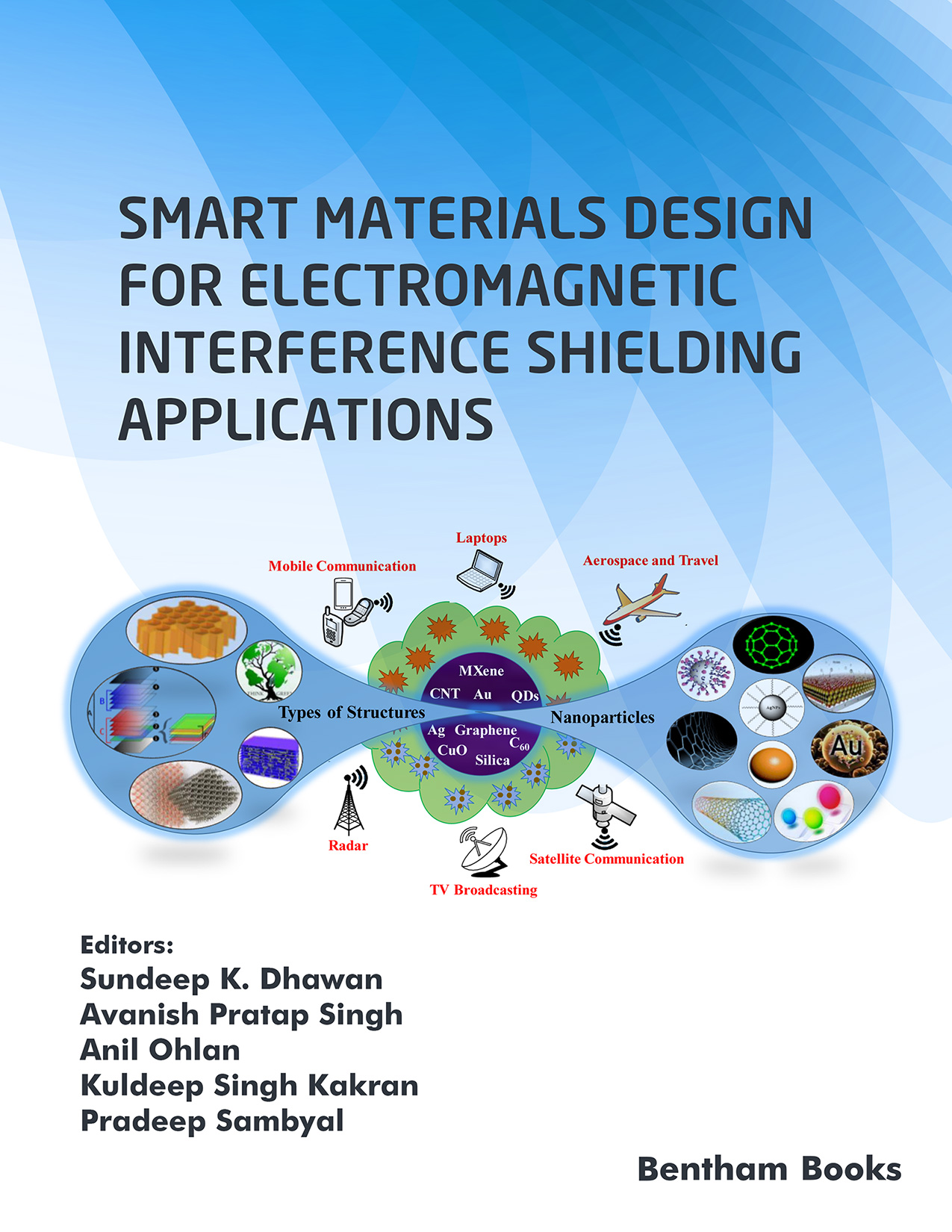The development of functional microwave materials is the most active areas in physical science, material science and electrical and electronic engineering and this is parallelly increasing with the expansion of electronics, mobile communication and satellite communication. In recent years, Microwave materials are employed in a variety of applications ranging from communication devices to military satellite services. The design of an ideal microwave shield requires complete understanding of the properties of materials at high frequencies. To dissipate the both electric and magnetic field components of microwave, generally, shield is a composite of magnetic and dielectric materials. Therefore, the characterization of dielectric and magnetic attributes, surface morphology, crystalline size, shape of material etc. are very important in microwave electronics. A number of direct and indirect measurement methods and techniques were developed to characterize the microwave shield, in past century. Even numerous textbooks, reviews and articles have been published for understanding the characterization techniques but most of them are either cover characterization techniques or materials. There is a strong need to provide a practical reference text book that support measurement techniques and microwave materials for researchers and engineers. This book presents a detailed discussion on up-to-date measurement methodologies, material synthesis and designing of an effective microwave shield. Basically, this book put all scattered information in the form of reports, journals and advances in this area at one place. This book is likely to be most useful to professional engineers who are engaged in designing characterization related instruments and designing commercial microwave materials in the form of absorbing sheets, fabric, glass etc. In spite of this, book also satisfies the need of researchers of other disciplines, biophysicist, and materials scientists, industrial engineer, graduate students, who wish to understand the thoroughly limitations of microwave materials and measurement methods in materials characterization. This book discusses almost all properties of conductors, semiconductors, dielectrics, and magnetic materials. at microwave frequencies. The electromagnetic characterization specially includes permittivity, permeability, mobility, and surface impedance.
The first chapter discusses the fundamentals of microwave shielding and underlying physics. After detailed discussion on electromagnetic properties and characterization techniques, a brief review of the materials and their shielding performance is presented.
Chapter 1 introduces the general properties of various electromagnetic materials and their, Chapter 2 provides a summary of the shielding performance and properties of light weight Carbon Composite Foams. The electrical conductivity in semiconducting range is very important properties for the development of absorption-based microwave shield. Chapter 3 and chapter 8 deal with the measurements of the permittivity and permeability of low-conductivity materials such as Carbon nanostructures-based Polymer nanocomposites and their free- standing sheet like structure for EMI shielding applications. Microwave properties of graphene and its derivatives-based nanocomposites and their composite with thermoplastic polyurethane are discussed in chapter 4 and chapter 6 respectively. Conducting polymer composites and copolymer composites are explored in chapter 5 and chapter 9 respectively. Chapter 7 is concerned with the microwave properties of dielectric flyash composites. In recent years, the research on 2D materials has been active. Chapter 10 and chapter 11 discuss the shielding behavior and dielectric attribute of 2D materials such as graphene and Mxenes. The last chapter of the book discusses the gamma-Ray Shielding properties of Industrial Waste Concrete also known as Synthetic Heavy Density Aggregate materials that are resistant to their properties at high temperatures are often needed in industry and in commercial applications. In general, it is possible to apply the techniques and materials discussed in this book to high-temperature measurements. Derails have been emphasized in the book on the latest development in fourth-generation (4G) as well as fifth-generation (5G) mobile networking technology. 5G mobile communication also produce intense radiations which are harmful for the human health and environment. Similar to the Radar absorbing materials, and defense systems, carbon-based materials such as carbon nanotubes and graphene, 2D materials, metal nanoparticles, porous materials and polymer-based EMI shielding materials have also attracted a lot of attention in the industry for solving the 4G & 5G electromagnetic radiations. In this book, each chapter is designed as a self- contained unit so that readers can easily get detailed knowledge relevant to their research interests. We meshed rivers of literature on microwaves materials and measurements into readable units. Several references have been provided for the convenience of readers who choose to pursue a certain issue in greater depth or revert to the original posts.
In writing this book, we tried to present the core ideas underlying various designs of microwave shield and their characterization so that readers would appreciate the method to design a nearly perfect shield using different materials, methods and approaches. We would like to mention that this textbook is a collection of multiple people's work. For the mentioned materials and designs that may still are under patent, we will neither be responsible nor liable.
There are a lot of people we owe a lot of appreciation for helping us in preparing this book and contributing their valuable chapters. Our most important gratitude goes to Dr. Manish Mudghal, Dr. Monika, Dr. Rajeev, Dr.Tajendra, Dr. Meenkashi, Dr. Rakesh, Dr. Seema and all our EMI shielding team which are the source of inspiration for the finalization of this book.
Sundeep K. Dhawan
CSIR-National Physical Laboratory
Dr. K. S. Krishnan Marg
New Delhi
India

